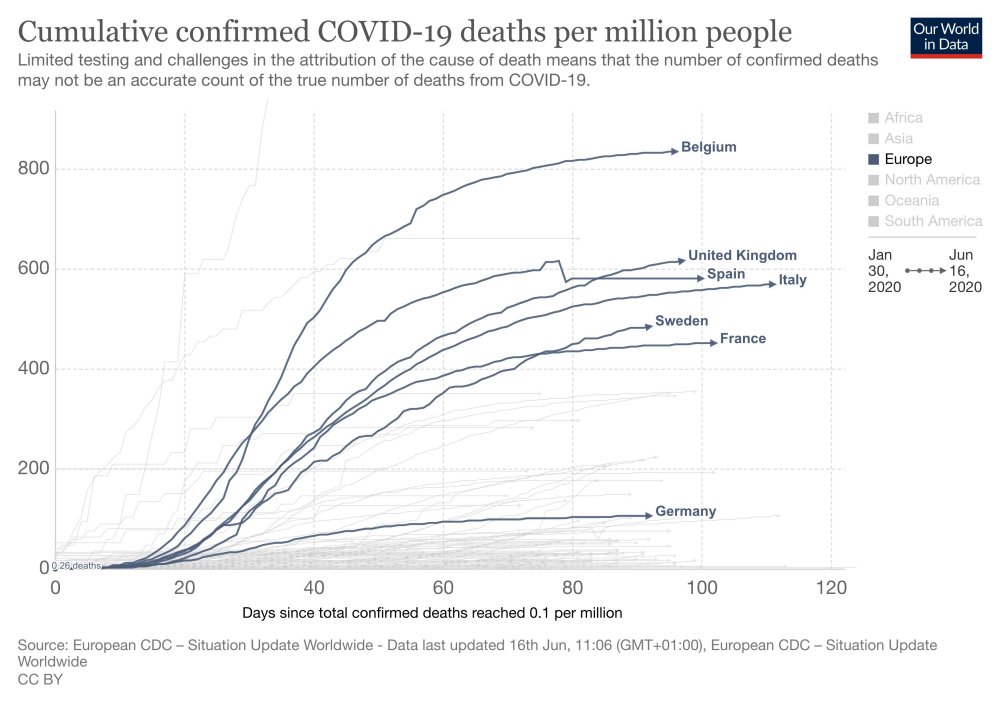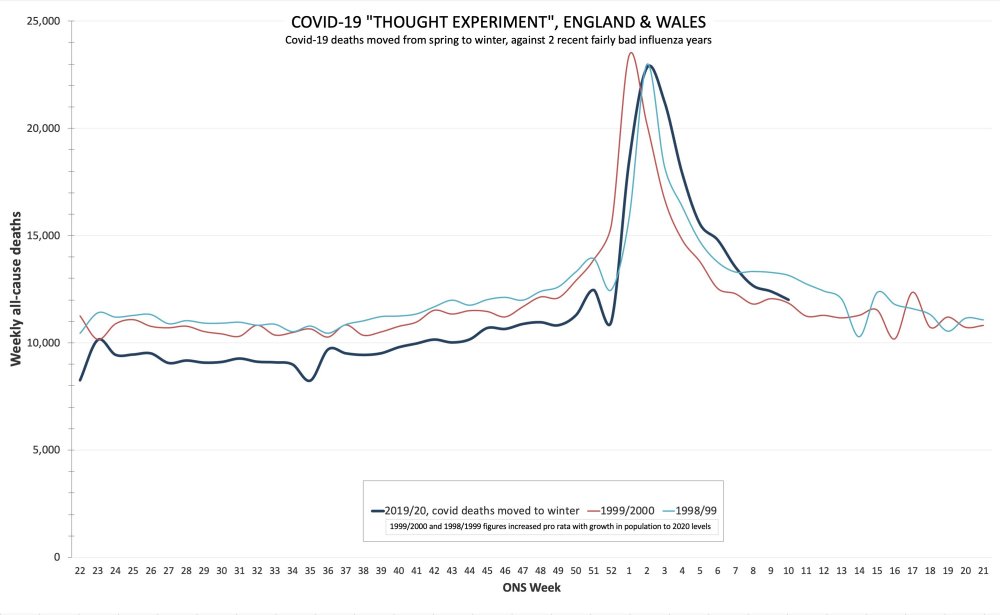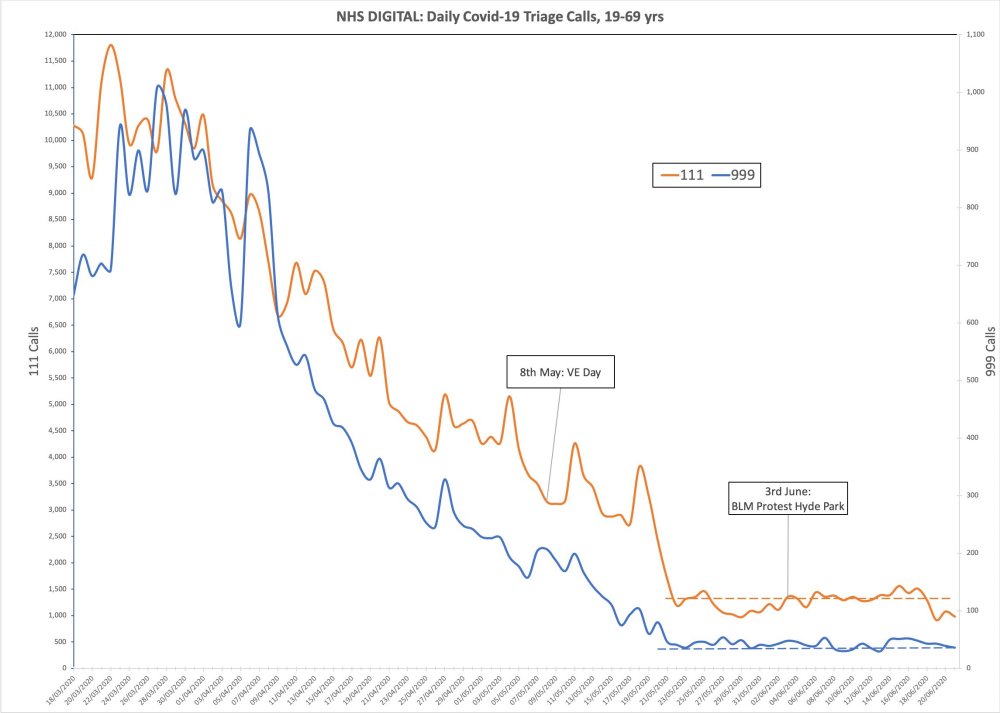Scientists did not have accurate Covid case numbers, and were unsure of hospitalisation and death rates when they published models suggesting that more than 500,000 people could die if Britain took no action in the first wave of the pandemic, it has emerged.
On March 16 2020, Imperial College published its “Report 9” paper suggesting that failing to take action could overwhelm the NHS within weeks and result in hundreds of thousands of deaths.
Before the paper, the UK coronavirus strategy was to flatten the peak rather than suppress the wave, but after the modelling was made public, the Government made a rapid u-turn, which eventually led to lockdown on March 23.
However SPI-M (Scientific Pandemic Influenza Group on Modelling) minutes released to the Telegraph under a Freedom of Information request show that by March 16, modellers were still “uncertain” of case numbers “due to data limitations”.
The minutes show that members were waiting for comprehensive mortality data from Public Health England (PHE) and said that current best estimates for the infection fatality rate, hospitalisation rates, and the number of people needing intensive care were still uncertain.
They also believed that modelling only showed “proof of concept” that lockdowns could help, and warned that “further work would be required”.
Professor Neil Ferguson
Browse the articles related to this topic below.
Join our community on Guilded.
It is more than a rebuke to Medley and the modellers though. This pandemic began, for many, with an announcement from Imperial College, whose study predicted 500,000 deaths if we did nothing. We locked down and never tested the prediction.
This time, in the face of what the public saw as dire predictions, we didn’t lock down and the apocalypse never came. The unspoken — and sometimes spoken — implication is clear: are we all fools?
The Covid modellers at Imperial College have begun to back down. About time too. Over the past few weeks, they have made extreme claims about the omicron variant that cannot be fully justified by fundamental science, let alone by clinical observation.
No10’s Test and Trace system has had barely any impact on thwarting the spread of Covid, according to official estimates.
The controversial £37billion scheme has been heavily criticised over the past year for being ineffective at breaking the chains of transmission.
New Government modelling found the programme – which critics have described as being the biggest ever waste of taxpayer money – may have only slashed cases by as little as six per cent.
“Lockdowns,” the mass quarantine of both sick and healthy people, have never before been used for disease mitigation in the modern Western world. Previously, the strategy had been systematically ruled out by the pandemic plans of the World Health Organization (WHO) and by health experts of every developed nation. So how did we get here?
https://www.tabletmag.com/sections/news/articles/masked-ball-cowardice
As Sarah Knapton has revealed in these pages, the brutal postponement of Freedom Day coincided with the release of a bunch of alarmist models predicting a huge new wave of deaths. The most pessimistic, inevitably from Imperial College, forecast 203,824 deaths over the next year. It did so by assuming just a 77-87 per cent reduction in hospitalisations following two vaccinations, despite the fact that real world data shows two vaccinations to be between 92 per cent (AstraZeneca) and 96 per cent (Pfizer) effective in preventing hospitalisation. That would cut the Imperial forecast of deaths by a gob-smacking 90 per cent to 26,854.
This keeps happening. In April the modellers assumed a 30 per cent effectiveness for the vaccine at preventing the spread of the virus. This was described as “a pessimistic view – but it is plausible, it’s not extreme”, by Professor Graham Medley, chairman of the SPI-M sub-group of Sage. It turns out it was far from plausible. At the end of March the BBC’s favourite modeller, Imperial College’s Neil Ferguson, was forecasting that by June 21, even with “optimistic” assumptions, less than half of Britain would be protected against severe disease by vaccination. The true figure is over 80 per cent.
https://www.telegraph.co.uk/news/2021/06/21/flawed-modelling-condemning-britain-lockdown/
So what about Sweden, huh? – The Spectator
It’s amazing how often Sweden still crops up in conversations. It didn’t impose tough lockdown, kept primary schools and core economic activities functioning, issued clear guidelines and relied on voluntary social distancing and personal hygiene practices to manage the crisis. For harsh lockdowns to be justified elsewhere, Sweden had to be discredited. Hence the harsh criticisms of Sweden’s approach last year by the New York Times, Newsweek, USA Today, CBS News and others.
But with Sweden’s demonstrable success, goalposts have shifted. Every time it’s mentioned as a counter to Europe’s high Covid-toll lockdown countries, the response now is: ‘But their Nordic neighbours did much better. Look at Denmark’. Let’s ‘interrogate’ this argument.
Dr Hodkinson is the CEO of Western Medical Assessments, and has been the Company’s Medical Director for over 20 years. He received his general medical degrees from Cambridge University in the UK, and then became a Royal College certified pathologist in Canada (FRCPC) following a residency in Vancouver, BC.
Source: Western Medical Assessments
- Dr Hodkinson’s interview is at 2h49m.
Find out more about the Investigative Corona Committee Germany.

Backup mirrors:
A shortened version of the video Session 56 has been uploaded to Bitchute by Coronavirus Plushie.
Dr. Michael Dykta, Dr. Wolfgang Wodarg, Professor Arne Burkhardt, Dr. Peter McCullough and Dr. Roger Hodkinson speak with Dr. Reiner Fuellmich on Germany’s Investigative Corona Committee Session 56.
- Dr McCullough’s is at around 1h35m.
- Dr Hodkinson’s interview is at 2h49m.
Find out more about the Investigative Corona Committee Germany.
The full video has been removed from YouTube. You can find a backup mirror below:
Social distancing and wearing face masks should stay forever, a Communist-supporting SAGE scientist has claimed.
Professor Susan Michie, of University College London, said she thinks the draconian restrictions should become part of people’s every day routine.
Dr. Hodkinson, here to discuss the dangers of the COVID-19 vaccines, the possibility of infertility, and the very real concerns about the vaccine-induced spike proteins and what new scientific research is clearly suggesting about their risks to your health.
Professor Neil Ferguson struck an unusually optimistic tone this week. With just one Covid death reported on Monday, and infection levels at an eight-month low in the UK, the architect of the original lockdown said: ‘The data is very encouraging and very much in line with what we expected.’ The first half of that statement is certainly true; the second half much less so.
https://www.spectator.co.uk/article/How-did-Sage-get-it-so-wrong
THE Government has been accused of over-relying on pandemic modelling and risking “catastrophe by computer”. Last week Boris Johnson published a cautious ‘roadmap‘ to normality after scientists warned him there could be 91,000 extra deaths if he scrapped curbs completely at the end of April.
These figures were based on Imperial College modelling that has since been challenged by Mark Harper, deputy chair of the Covid Recovery Group of MPs. He argued the model did not account for key factors shown to change the course of the pandemic such as the most up to date evidence on the protective effect of the vaccines as well as the “seasonal effect” as the country moves into summer. Modelling has driven much of the pandemic response. The initial reaction in the UK, the US and other European countries was shaped by the dramatic headlines in March last year, suggesting 550,000 deaths in the UK and 2.2 million in the US if mitigation measures were not put in place.
- German researchers enrolled nearly 2,500 parents and their children in a study
- Found three times as many adults had coronavirus antibodies than children
- Data also shows a previously infected adult and an uninfected child was 4.3 times more common than a previously infected child and an uninfected parent
Children are unlikely to have played a significant role in the spread of coronavirus during the first wave last year, a study shows.
Throughout the pandemic it has become increasingly evident children are less affected by Covid-19; symptoms, severe disease and death figures in children are all much lower than would be expected when compared to the rest of the population.
Figures from Public Health England (PHE) show the current risk of dying from coronavirus if infected is 1,513 per 100,000 people for over-80s, but for children aged five to nine, this is just 0.1 per 100,000.
To those people who, still now, object to lockdowns on civil liberties principles, this will be a chilling reminder of the centrality of the authoritarian Chinese model in influencing global policy in this historic year.
- The ‘new strain’ of coronavirus that put London into Tier 4 was down to more computer modelling from Neil Ferguson.
- The government deliberately resorted to fear.
- The damage done to our standing in the world is permanent.
- The government is doing something it should not do and has no justification.
- The whole notion of the mutant strain is completely constructed.
- NERVTAG is full of psychologists who are experts in frightening people.
- If you don’t get angry, this will never go away.
- There is no evidence that this new variant is any more infection that the old one.
- Historically medical beliefs are often wrong.
- Fighting this thing is probably the most important thing we’ve ever done in our lives.
We have consistently (and I’d say flagrantly) over-estimated the threat of Covid-19, starting with the absurd prediction of 500,000 deaths by Imperial College London’s Professor Neil Ferguson. Data experts who later reviewed the computer code used in the professor’s model described it as “a mess which would get you fired in private industry”…
The trashing of the economy, the worst recession in our history, avoidable deaths at home with people too frightened to go to hospital for fear of catching the virus, chaos in education, the explosion in domestic violence, steep rises in anxiety, depression, and heavy drinking?
No. Lockdown will come to be seen as one of the most catastrophic misjudgments a British government has ever made.
Laura Dodsworth interviews Alistair Haimes on Freethinking with Laura Dodsworth.
Support Laura Dodsworth through Patreon:
https://www.patreon.com/lauradodsworth
Interview notes and charts
- The difference between what the government was telling us and what their information was telling us was so extreme and outrageous.
- Exponential means a “constant rate of growth.” The government data in March was clearly showing that the COVID-19 was declining, not growing exponentially. This was the same in all countries you could see the data. [See chart 1]
- A constantly declining growth rate will make a bell curve. The government were standing in front of bell curve graphs during their briefings yet they were telling us we were in the middle of the epidemic.
- It was very clear that we were heading to a peak sometime around early to mid-April.
- You don’t have to be complicated mathematics to see that COVID-19 was running out of steam almost from day one.
- The conclusion from the Centre for Evidence-Based Medicine seems to be that it’s impossible to predict if there will be a second wave.
- Sweden’s epidemic looks identical to the UK’s but they did not lockdown. Their datapoint indicates there won’t be a second wave. There has been no spike in Denmark either. [See chart 2]
- Unknowns: has summer affected COVID-19 and will there be a mutation?
- Will illnesses during the autumn and winter be mis-attributed to COVID-19? Poor media coverage means that we can’t be sure.
- Symptoms of COVID-19 are very similar to the flu. Something could look like a second wave but will we really know?
- The lockdown is costing a Brexit bill a week.
- The government response seems to have been skewed by Neil Ferguson’s modelling data. The make-up of government advisors seems to be a recipe for groupthink, which is very dangerous.
- Epidemiology (the way a disease spreads through the population) is not complicated science. The government could have had lots of people who were very good at this but they didn’t.
- We should have cocooned the vulnerable, make sure the NHS has capacity and “let it rip” through the population.
- We should never have had an open-ended lockdown.
- The ‘R number’ is just the difference of in the number of people infected after each generation of a disease. Britain crossed the ‘magical R of 1’ line a few days before lockdown and the same day as Sweden. Whatever interventions have been done doesn’t seem to have had any effect. [See chart 3]
- COVID-19 is mostly a care home and hospital disease. This was obvious very early on. Old people should not have been moved from hospitals into care homes. It seems as if we knowingly seeded the most vulnerable environment with the disease.
- 37% of our deaths are care home residents but they are only 0.5% of our population. Of them are dementia sufferers.
- Over 20% of the infections were picked up in the hospitals. COVID-19 seems more like MRSA than influenza in that it’s an infection control problem.
- COVID-19 is much more comparable to flu for the rest of the population.
- 1968 flu killed 80,000 people in the UK.
- This last winter was a low flu winter. It’s quite possible that the people who died of COVID-19 are those who didn’t die.
- If you overlay COVID-19 deaths with the 2000 flu season, they look very similar. [See chart 4]
- 95% of deaths have had another serious disease. Most people have almost no chance of dying from COVID-19.
- If you are under 40, you have more chance of being struck by lightning that dying of COVID-19.
- If you are under 60, you have more chance of drowning.
- At any age, you have more chance of dying on the roads than dying of COVID-19.
- Lead indicators of 111 and 999 calls with COVID-19 symptoms show there was no spike after VE Day celebrations or BLM protests. In fact, it was even coming down at lockdown. That lockdown was big change for COVID-19 is invisible in the data. [See chart 5]
Charts
Chart 1: COVID-19 was declining in Europe as of march. It was not growing exponentially

Chart 2: Sweden’s epidemic looks similar to the UK’s but they did not lock down.

Chart 3: Britain crossed the ‘magical R of 1’ line a few days before lockdown

Chart 4: COVID-19 deaths overlayed with the 2000 flu season

Chart 5: No spike after BLM protests

Flaxman et al. (Nature, 8 June 2020, https://doi.org/10.1038/s41586-020-2405-7, 2020) infer that non-pharmaceutical interventions conducted by several European countries considerably reduced effective reproduction numbers and saved millions of lives. We show that their method is ill-conceived and that the alleged effects are artefacts. Moreover, we demonstrate that the United Kingdom’s lockdown was both superfluous and ineffective.

